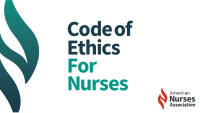ANA’s efforts helped make this new rule a reality.
In a significant move toward achieving safe nurse staffing levels, the Centers for Medicare & Medicaid Services (CMS) established minimum staffing standards for nurses in long-term care (LTC) facilities across the country. CMS set these standards through a landmark final rule aimed at bolstering nurse staffing in these facilities. Part of a larger focus by the Biden administration to improve quality and safety in nursing homes, the May 2024 rule specifies quantifiable, enforceable minimums for LTC personnel.
This final rule closely follows the original proposal. In November, during the 2023 public input period, the American Nurses Association (ANA) strongly advocated for the proposed standards, commenting individually and leading comment efforts by 25+ ANA constituent and state nurses associations and organizational affiliates. These letters urged the agency to finalize its proposals with suggested refinements; ANA appreciates that CMS incorporated many of these recommendations into the final rule.
The fully implemented rule requires LTC facilities to meet a staffing standard of 3.48 total hours per resident day (HPRD) and individual minimum nurse staffing standards of 0.55 HPRD for RNs and 2.45 HPRD for nurse aides. CMS didn’t specifically include LPNs/LVNs in the final standards, despite ANA’s recommendation. However, the agency noted that facilities can use these nurses to meet total staffing standard requirements.
Preventing falls in long-term care facilities
Pressure injury prevention in long-term care
ANA believes patients and personnel will benefit from enforceable LTC standards. ANA advocates are especially pleased that CMS will require LTC facilities to have an RN onsite 24 hours a day, 7 days a week. ANA has long advocated for this requirement and is encouraged that the agency recognizes its importance for patient care and quality outcomes. Another win for nurses is the explicit requirement for care team input in LTC facility assessments and to help shape recruitment and retention efforts. ANA advocated for both of these provisions. ANA also urged CMS to grant exemptions based only on rigorous assessments, which the agency incorporated in the final rule. In addition, CMS noted its intention to invest $75 million in LTC workforce development. The agency is still determining how best to roll out this initiative, and ANA continues to watch for opportunities to weigh in on how to ensure these efforts truly support and provide incentives for nurses.
This final rule represents a significant victory for LTC patients and residents as well as the healthcare personnel who care for them. However, work on these standards remains. Groups representing LTC facilities continue to express opposition to the provisions in the rule and have stated that they’ll fight to delay or halt implementation. They could pursue these efforts through the court system or congressional action—building on efforts in Congress that were underway before the agency released the final rule. ANA takes these efforts seriously and continues to seek opportunities to protect the new provisions and promote similar efforts applicable to all settings. ANA also urges its members and all nurses to learn more about advocacy for safe staffing and engage in their own advocacy efforts. Together, we’ll continue to make real strides.
Zina Gontscharow is associate director for policy at ANA.
American Nurse Journal. 2024; 19(7). Doi: 10.51256/ANJ072427
Resources
ANA comment letter on LTC proposed rules (bit.ly/3y7C33s)
ANA and other organizations’ comment letter on LTC proposed rules (bit.ly/4agKNSl)
ANA Advocacy Resources (RNaction.org)




















